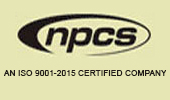Google Search
Search
Already a Member ?
Best Business Opportunities in South Africa- Identification and Selection of right Project, Thrust areas for Investment, Industry Startup and Entrepreneurship
We can provide you detailed project reports on the following topics. Please select the projects of your interests.
Each detailed project reports cover all the aspects of business, from analysing the market, confirming availability of various necessities such as plant & machinery, raw materials to forecasting the financial requirements. The scope of the report includes assessing market potential, negotiating with collaborators, investment decision making, corporate diversification planning etc. in a very planned manner by formulating detailed manufacturing techniques and forecasting financial aspects by estimating the cost of raw material, formulating the cash flow statement, projecting the balance sheet etc.
We also offer self-contained Pre-Investment and Pre-Feasibility Studies, Market Surveys and Studies, Preparation of Techno-Economic Feasibility Reports, Identification and Selection of Plant and Machinery, Manufacturing Process and or Equipment required, General Guidance, Technical and Commercial Counseling for setting up new industrial projects on the following topics.
Many of the engineers, project consultant & industrial consultancy firms in India and worldwide use our project reports as one of the input in doing their analysis.
We can modify the project capacity and
project cost as per your requirement.
We can also prepare project report on any subject as per your requirement.





